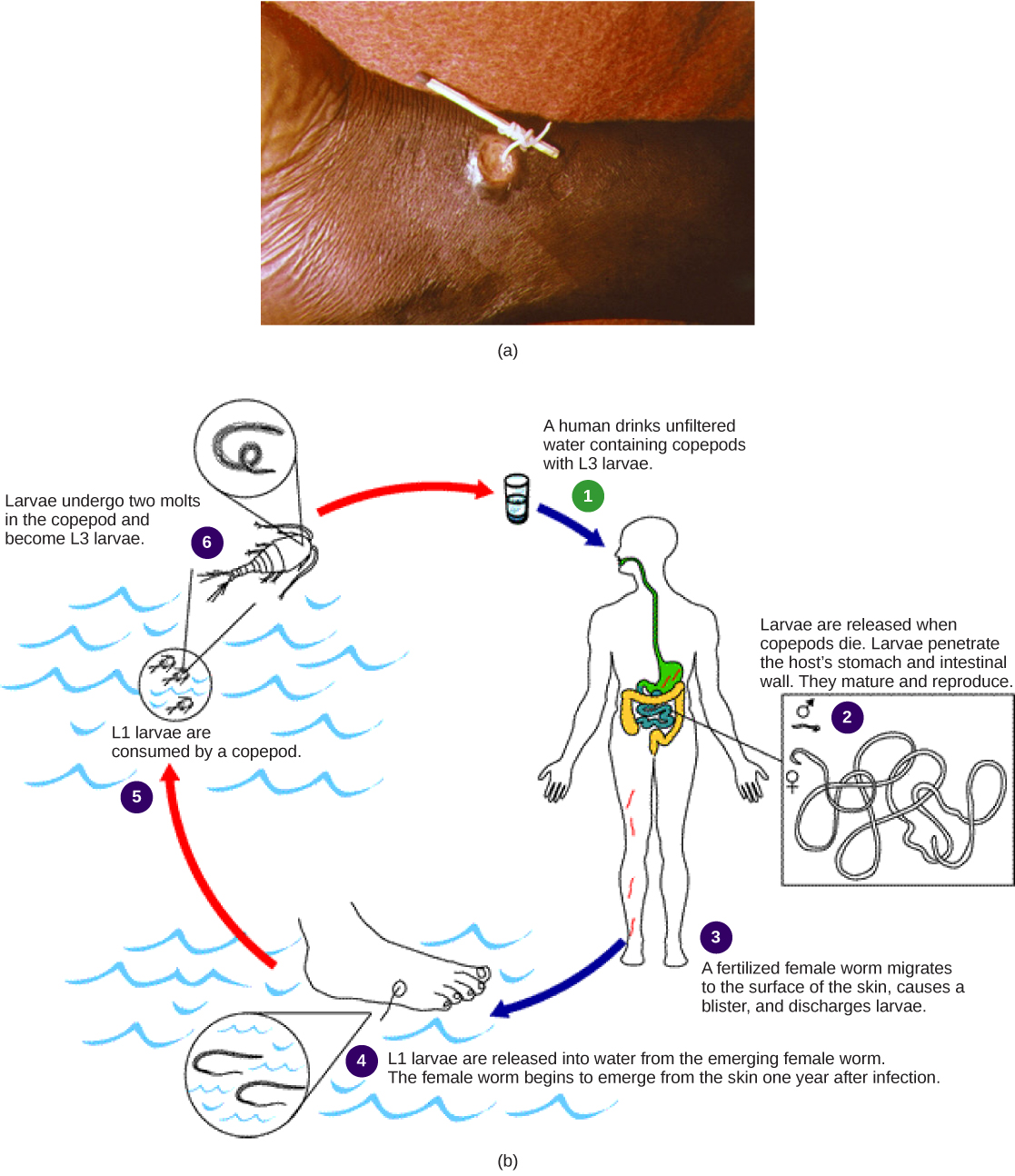| << Chapter < Page | Chapter >> Page > |
A number of common parasitic nematodes serve as prime examples of parasitism. These animals exhibit complex lifecycles that involve multiple hosts, and they can have significant medical and veterinary impacts. Humans may become infected by Dracunculus medinensis , known as guinea worms, when they drink unfiltered water containing copepods ( [link] ). Hookworms, such as Ancyclostoma and Necator , infest the intestines and feed on the blood of mammals, especially in dogs, cats, and humans. Trichina worms ( Trichinella ) are the causal organism of trichinosis in humans, often resulting from the consumption of undercooked pork; Trichinella can infect other mammalian hosts as well. Ascaris , a large intestinal roundworm, steals nutrition from its human host and may create physical blockage of the intestines. The filarial worms, such as Dirofilaria and Wuchereria , are commonly vectored by mosquitoes, which pass the infective agents among mammals through their blood-sucking activity. Dirofilaria immitis , a blood-infective parasite, is the notorious dog heartworm species. Wuchereria bancrofti infects the lymph nodes of humans, resulting in the non-lethal but deforming condition called elephantiasis, in which parts of the body become swelled to gigantic proportions due to obstruction of lymphatic drainage and inflammation of lymphatic tissues.

The name “arthropoda” means “jointed legs” (in the Greek, “arthros” means “joint” and “podos” means “leg”); it aptly describes the enormous number of invertebrates included in this phylum. Arthropoda dominate the animal kingdom with an estimated 85 percent of known species included in this phylum and many arthropods yet undocumented. The principal characteristics of all the animals in this phylum are functional segmentation of the body and presence of jointed appendages. Arthropods also show the presence of an exoskeleton made principally of chitin, which is a waterproof, tough polysaccharide. Phylum Arthropoda is the largest phylum in the animal world, and insects form the single largest class within this phylum. Arthropods are eucoelomate, protostomic organisms.
Phylum Arthropoda includes animals that have been successful in colonizing terrestrial, aquatic, and aerial habitats. This phylum is further classified into five subphyla: Trilobitomorpha (trilobites, all extinct), Hexapoda (insects and relatives), Myriapoda (millipedes, centipedes, and relatives), Crustaceans (crabs, lobsters, crayfish, isopods, barnacles, and some zooplankton), and Chelicerata (horseshoe crabs, arachnids, scorpions, and daddy longlegs). Trilobites are an extinct group of arthropods found chiefly in the pre-Cambrian Era that are probably most closely related to the Chelicerata. These are identified based on fossil records ( [link] ).

Notification Switch
Would you like to follow the 'Biology' conversation and receive update notifications?